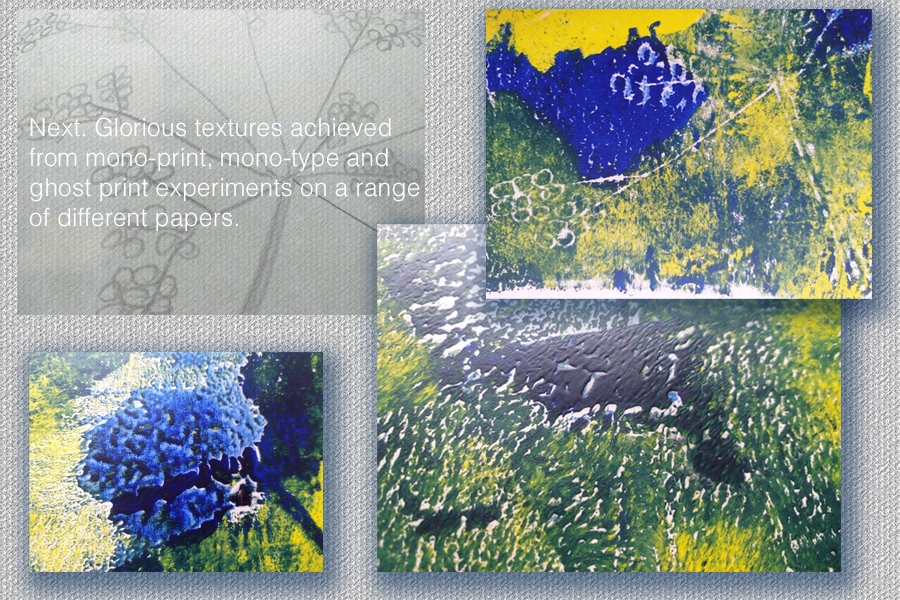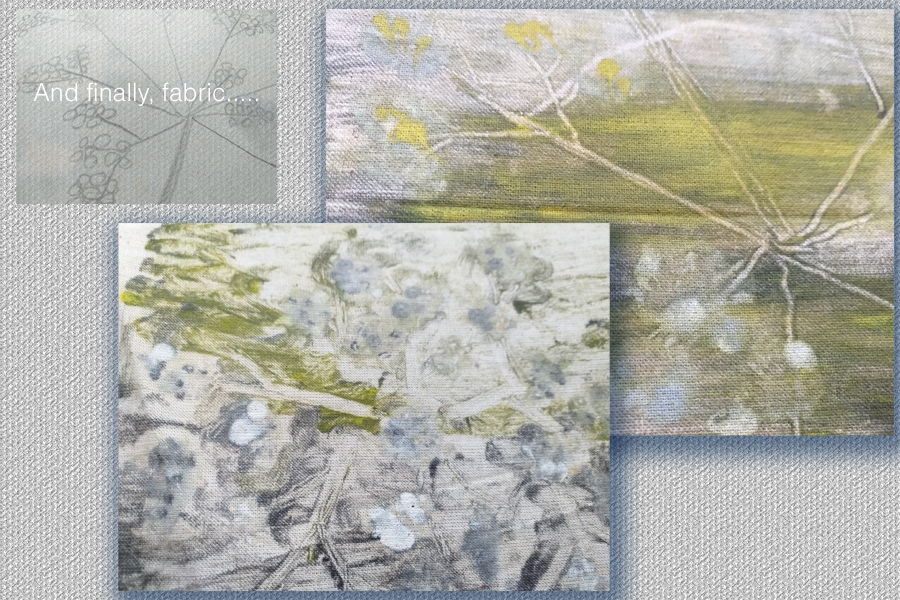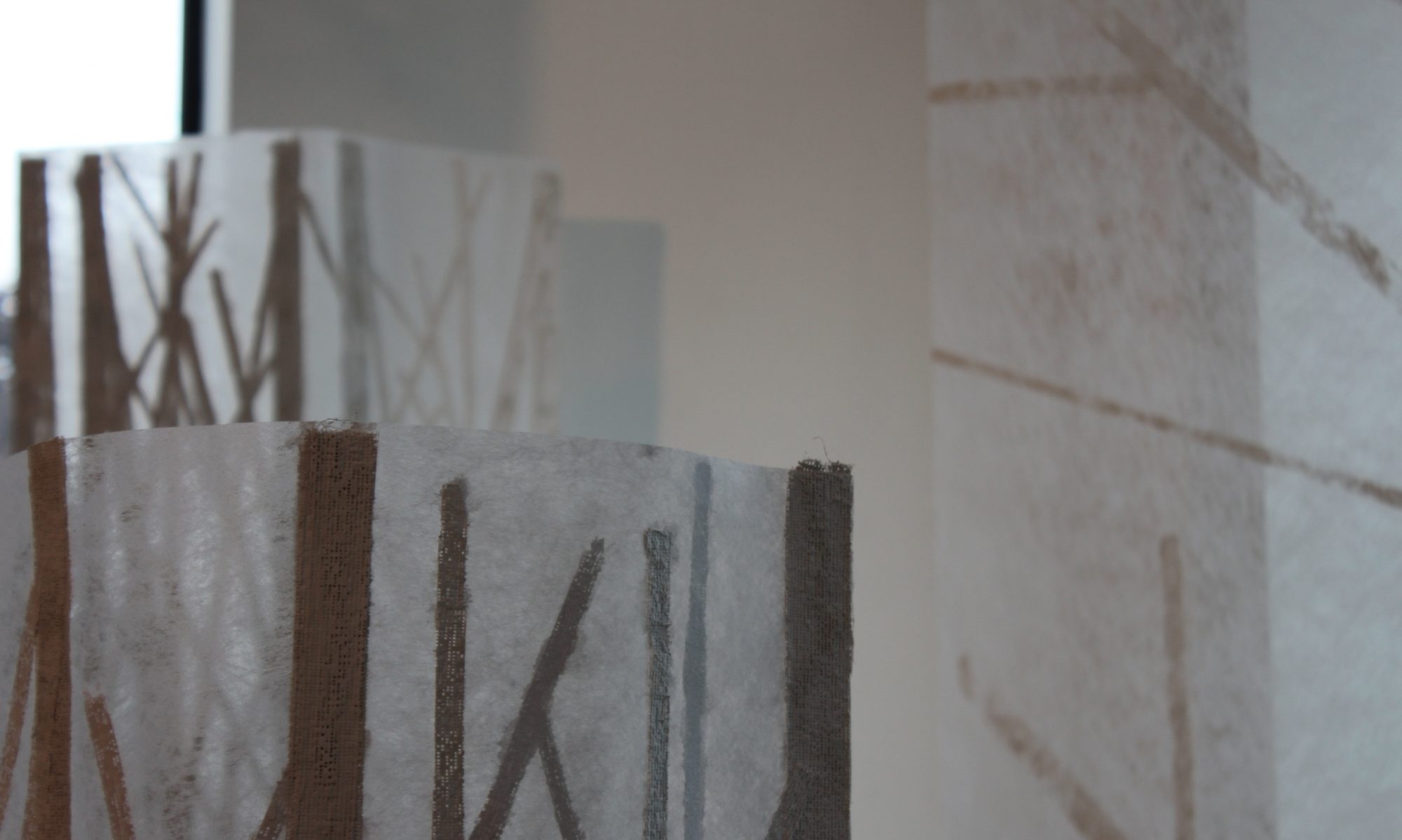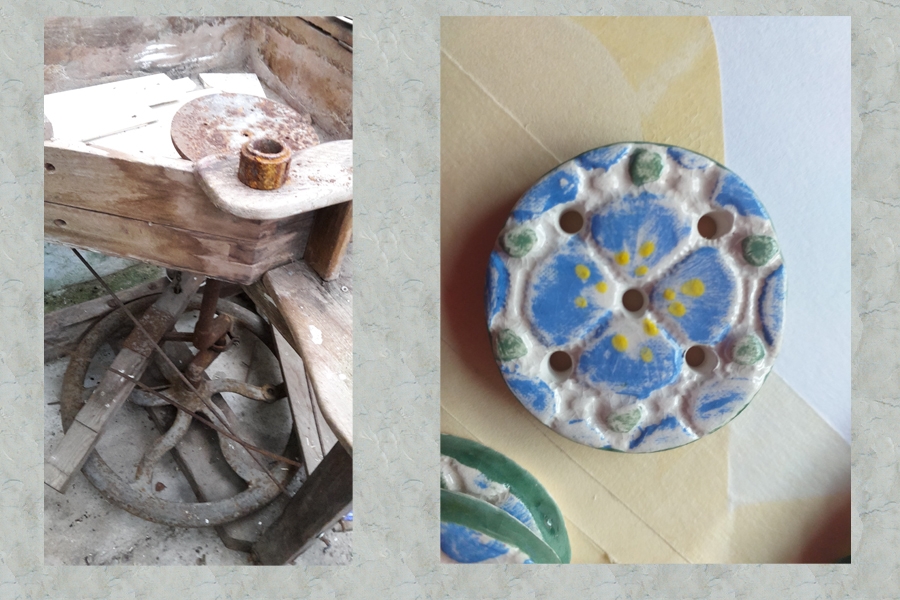Day One. What joy! Find myself in my element. I am quite confident about printmaking and have previous experience of quite a few formal techniques: mono-print, lino, silk-screen, dry-point, Indian wood blocks, and less formal ones like using found surfaces and self made ‘blocks’ … then also, of course, watching Dad (much in mind again!) doing his ‘Bewick’ inspired work in box wood and copper etching and using the letter press. But, today was splendid mainly for the chance to try some new techniques like Japanese wood block. However, more of that later…
First, I began with photocopying and scanning the old deeds for my place – thinking I may overprint on them by way of developing ideas for my ‘Scrap That’ book. These are gorgeous artefacts dating back to 1746 in the reign of George II ? detailing title exchanges and indentures relating to the land which is now my allotment, garden, bit of river, woods and field, until its entry onto the land registry in 1988 as ‘land opposite (my house)’. The use they would have been putting it too of course, would have been prospecting in the mineral seams. I love to imagine the people present at the time the documents were being agreed and the sound of the quills on the parchment as the signatures were being done. The seals and stamps are intriguing. The archaic language is delicious and so are the details like ‘deed being made between such and such, clogger and the aforementioned other such and such miner of lead ore…..’. The way they give me a touch of this history is enchanting and it seems appropriate to use them somehow in my ‘legacy’ book.

(Below) I was a bit disappointed in the way the photocopies came out (1.) Far too saturated for my liking and the glossy print quality didn’t take the ink very well. However, printing off the scanned images (2.) produced better results – more akin to the original documents and interesting results produced with mono- printing and mono-type experiments (3.) using words from my poem for the book ( as far as I’ve got it ….) and drawing elder flower/berry motifs.



What a glorious (messy) morning. Then, the p.m. was about Japanese wood block. It took an age to cut the lettering of the poem verse but, no injuries and only one letter that I forgot to reverse … an ‘a’ right in the centre of the block too – (how annoying).





